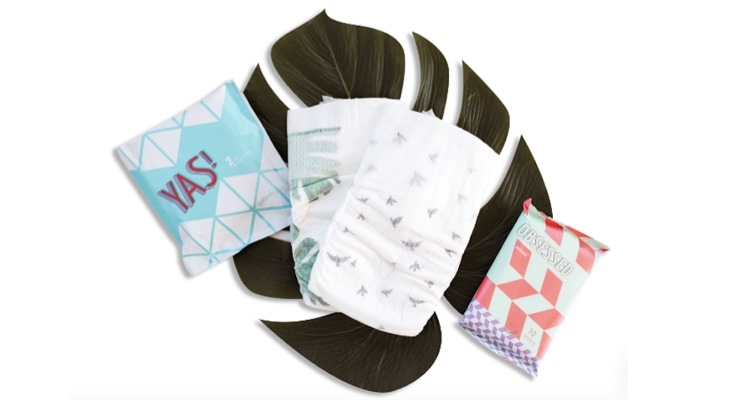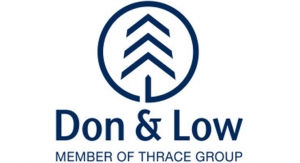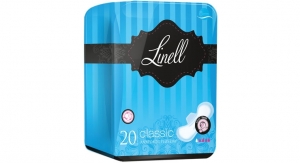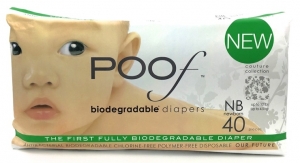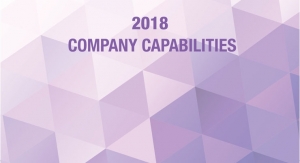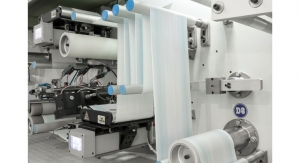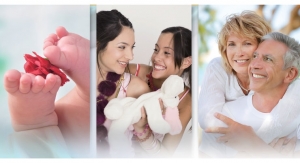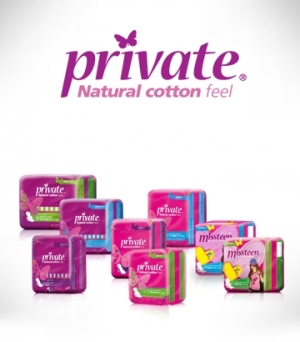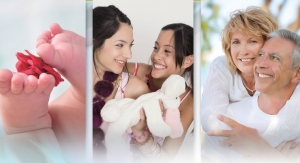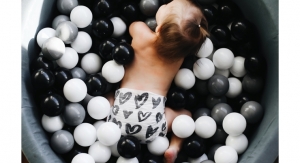Tara Olivo, associate editor05.09.18
The Irvine, CA-based company ParasolCo, which launched its first line of designer diapers and wipes just two years ago, has just introduced a new line of high-end hygiene products in April.
When it entered the hygiene market in 2016, ParasolCo set itself apart from others in the industry by offering one of the softest and thinnest diapers on the market, while also detailing the ingredients in its products—even revealing where they were manufactured.
Following the initial launch, founder Jessica Hung carefully listened to customer feedback and sought to develop an even softer and higher performing diaper.
Throughout 2016 and 2017, she traveled the globe and gained a better awareness of the hygiene supply chain, from the raw materials to the final product.
“I realized there are different grades and qualities for raw materials, and I got a very good understanding of the supply chain,” she says. “The next step is the machinery—which manufacturer has the most up to date machinery and how are they utilizing new technologies to create high quality products. To make products, there are two things: the manufacturing process and the raw materials.”
Hung was able to identify cutting edge manufacturers who source only top quality materials. “China is a newcomer to this category, so when they entered the hygiene category, they asked themselves, ‘what are the most efficient technologies?’” she says.
After conducting extensive research and redeveloping its products, Parasol’s new line is made with newly sourced raw materials from around the globe, which is then produced in China on Japanese and Italian machinery. According to the company, its team in China utilizes the most sophisticated, eco-friendly and sustainable processes to make a high quality diaper.
Available in five sizes, the new version of ParasolCo’s diapers offers new features, in addition to brand new fashionable diaper designs. After hearing concerns from parents about blowouts with its first line of diapers, Parasol now incorporates an enhanced elastic back, giving its open diapers a 360 degree performance for an enhanced fit. “No matter how the baby moves, everything will stay inside,” Hung explains.
Additionally, Parasol claims it’s the first brand to have an interactive leg cuff that prevents leaks by having a longer skin-encompassing cuff that funnels the baby’s liquid into the diaper.
The core structure of the redesigned diaper is also very different. The layered, thinner core features a very soft, cloth-like topsheet that dries in less than a minute.
“Babies are uncomfortable when diapers are wet and that can be the cause of diaper rash,” Hung says. “Our new feature will enhance their movements and they’ll be happier.”
Hung acknowledges that it’s the lengthy conversations and interviews with parents that have contributed to these improvements. “That’s how we try to improve every single element and help them enhance their experience,” she adds.
While she admits Parasol diapers are more expensive compared to conventional brands, the company strives to bring the price down wherever it can, and hopes to do so when it gets on a bigger scale. “When we can produce hundreds of millions of diapers, then we will be able to lower the price. That’s definitely our goal. We don’t want it to be expensive—we want it to be efficient. We definitely have room to improve,” she says.
Taking a Cue From Asia
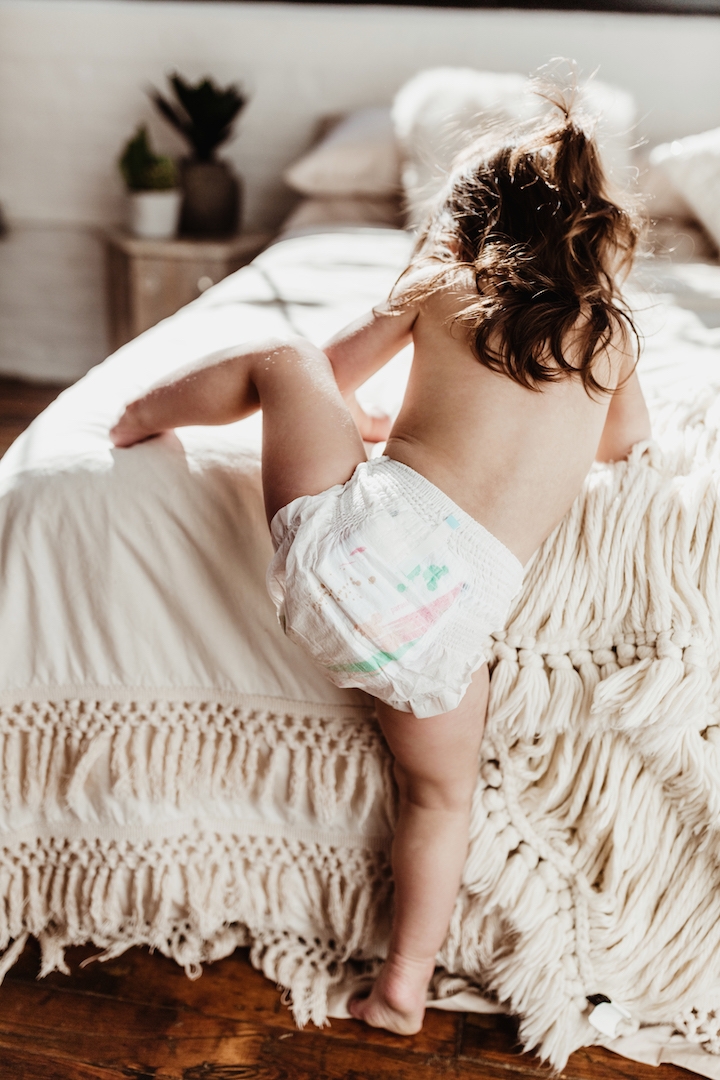 An addition to the improved Parasol open diaper collection are new baby diaper pants—but don’t call them training pants. Babies as little as 14 lbs. can wear the pant-style diapers.
An addition to the improved Parasol open diaper collection are new baby diaper pants—but don’t call them training pants. Babies as little as 14 lbs. can wear the pant-style diapers.
In the U.S., Hung points out that people typically only use baby pants on toddlers closer to potty training age—in Asia and other countries, this isn’t the case. “Babies move around fast! It’s much easier to just slide on and off a diaper pant. For any baby that’s three months and older, as soon as they can move actively, this is perfect for them because it follows their movement—360 degrees—with no blowouts.”
The design of the diaper pants features the same soft, quick-drying core, and also features a “toss tab” sticker on the back that can be used to dispose of the diaper pant.
“American moms wonder why they can’t get diaper pants with the same kind of softness that’s in Asia,” Hung says. “Nobody has soft pants here, and I don’t think people should wait until a kid is two years old to wear pants.”
Femcare, Wipes and the Future
Parasol’s new collection also includes a line of feminine pads (regular and overnight) and pantyliners, as well as an expanded line of wipes.
Offering a thin, soft and fast-drying core, the pads and liners have topsheets in two different patterns—bows and hearts. Flushable Femme wipes are also part of its feminine care line. The wipes use a pearl pattern spunlace and are made with 99.2% Reverse Osmosis, five-time filtered water developed in Japan. “The water is a critical part of the quality,” Hung says.
Parasol also uses an antibacterial agent extracted from cereal and soybeans.
Meanwhile, its new and improved baby wipes are one of the thickest wipes on the market, Hung claims, at 60gsm. The baby wipes are made using the same safe ingredients as the femme wipes, as are the company’s new all-purpose wipes that can be used on skin and also to clean surfaces and toys. The all-purpose wipes are 50gsm.
Consumers can test out the whole new collection with the Parasol Kit, which includes a pack of diapers or diaper pants, along with baby wipes, all-purpose wipes, femme wipes and femme pads, for $14. “It’s our way to say hi and have people give it a try,” says Hung.
Parasol products are currently available in the U.S., Canada, South Korea and China and will expand to five more countries later this year.
Hung also reveals that the company will introduce tampons and adult incontinence products in the third quarter of 2018.
When it entered the hygiene market in 2016, ParasolCo set itself apart from others in the industry by offering one of the softest and thinnest diapers on the market, while also detailing the ingredients in its products—even revealing where they were manufactured.
Following the initial launch, founder Jessica Hung carefully listened to customer feedback and sought to develop an even softer and higher performing diaper.
Throughout 2016 and 2017, she traveled the globe and gained a better awareness of the hygiene supply chain, from the raw materials to the final product.
“I realized there are different grades and qualities for raw materials, and I got a very good understanding of the supply chain,” she says. “The next step is the machinery—which manufacturer has the most up to date machinery and how are they utilizing new technologies to create high quality products. To make products, there are two things: the manufacturing process and the raw materials.”
Hung was able to identify cutting edge manufacturers who source only top quality materials. “China is a newcomer to this category, so when they entered the hygiene category, they asked themselves, ‘what are the most efficient technologies?’” she says.
After conducting extensive research and redeveloping its products, Parasol’s new line is made with newly sourced raw materials from around the globe, which is then produced in China on Japanese and Italian machinery. According to the company, its team in China utilizes the most sophisticated, eco-friendly and sustainable processes to make a high quality diaper.
Available in five sizes, the new version of ParasolCo’s diapers offers new features, in addition to brand new fashionable diaper designs. After hearing concerns from parents about blowouts with its first line of diapers, Parasol now incorporates an enhanced elastic back, giving its open diapers a 360 degree performance for an enhanced fit. “No matter how the baby moves, everything will stay inside,” Hung explains.
Additionally, Parasol claims it’s the first brand to have an interactive leg cuff that prevents leaks by having a longer skin-encompassing cuff that funnels the baby’s liquid into the diaper.
The core structure of the redesigned diaper is also very different. The layered, thinner core features a very soft, cloth-like topsheet that dries in less than a minute.
“Babies are uncomfortable when diapers are wet and that can be the cause of diaper rash,” Hung says. “Our new feature will enhance their movements and they’ll be happier.”
Hung acknowledges that it’s the lengthy conversations and interviews with parents that have contributed to these improvements. “That’s how we try to improve every single element and help them enhance their experience,” she adds.
While she admits Parasol diapers are more expensive compared to conventional brands, the company strives to bring the price down wherever it can, and hopes to do so when it gets on a bigger scale. “When we can produce hundreds of millions of diapers, then we will be able to lower the price. That’s definitely our goal. We don’t want it to be expensive—we want it to be efficient. We definitely have room to improve,” she says.
Taking a Cue From Asia

In the U.S., Hung points out that people typically only use baby pants on toddlers closer to potty training age—in Asia and other countries, this isn’t the case. “Babies move around fast! It’s much easier to just slide on and off a diaper pant. For any baby that’s three months and older, as soon as they can move actively, this is perfect for them because it follows their movement—360 degrees—with no blowouts.”
The design of the diaper pants features the same soft, quick-drying core, and also features a “toss tab” sticker on the back that can be used to dispose of the diaper pant.
“American moms wonder why they can’t get diaper pants with the same kind of softness that’s in Asia,” Hung says. “Nobody has soft pants here, and I don’t think people should wait until a kid is two years old to wear pants.”
Femcare, Wipes and the Future
Parasol’s new collection also includes a line of feminine pads (regular and overnight) and pantyliners, as well as an expanded line of wipes.
Offering a thin, soft and fast-drying core, the pads and liners have topsheets in two different patterns—bows and hearts. Flushable Femme wipes are also part of its feminine care line. The wipes use a pearl pattern spunlace and are made with 99.2% Reverse Osmosis, five-time filtered water developed in Japan. “The water is a critical part of the quality,” Hung says.
Parasol also uses an antibacterial agent extracted from cereal and soybeans.
Meanwhile, its new and improved baby wipes are one of the thickest wipes on the market, Hung claims, at 60gsm. The baby wipes are made using the same safe ingredients as the femme wipes, as are the company’s new all-purpose wipes that can be used on skin and also to clean surfaces and toys. The all-purpose wipes are 50gsm.
Consumers can test out the whole new collection with the Parasol Kit, which includes a pack of diapers or diaper pants, along with baby wipes, all-purpose wipes, femme wipes and femme pads, for $14. “It’s our way to say hi and have people give it a try,” says Hung.
Parasol products are currently available in the U.S., Canada, South Korea and China and will expand to five more countries later this year.
Hung also reveals that the company will introduce tampons and adult incontinence products in the third quarter of 2018.

